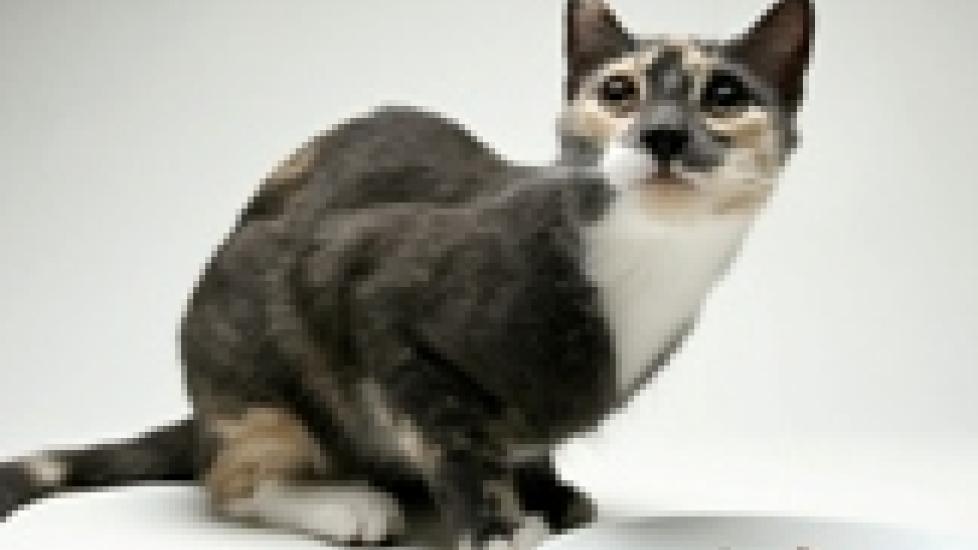Using Math to Compare Carbs in Canned Cat Food and Dry Food
Whenever the topic of feeding cats comes up, a few points always seem to arise.
- Cats should eat high protein, moderate fat, low carbohydrate foods.
- For some individuals (e.g., those prone to obesity, diabetes mellitus, and many disorders of the kidneys and lower urinary tract) canned food is superior to dry.
However, when comparing cat food labels, those two statements can appear to be contradictory. I pulled the following guaranteed analyses off the website of a major pet food manufacturer. Both the canned and dry cat food formulations are chicken-based to make them as similar as possible
Canned Cat Food
|
Crude Protein, minimum |
10.00 % |
|
Crude Fat, minimum |
5.00 % |
|
Crude Fiber, maximum |
1.00 % |
|
Moisture, maximum |
78.00 % |
|
Ash, maximum |
3.20 % |
Dry Cat Food
|
Crude Protein, minimum |
33. 00 % |
|
Crude Fat, minimum |
15. 00 % |
|
Crude Fiber, maximum |
3. 00 % |
|
Moisture, maximum |
10. 00 % |
|
Ash, maximum |
7. 00 % |
At first glance, doesn’t it look like the dry cat food better fits the high protein, low carb (I know it’s not listed, more on that in a sec), moderate fat mantra? But that all changes when you take water out of the equation. Look at those wildly different moisture levels. When you calculate the foods’ guaranteed analyses on a dry matter basis (removing the water), you see that high protein, low carb, and moderate fat and a canned formulation typically go hand-in-hand.
To reconfigure a guaranteed analysis on a dry matter basis, follow these steps.
- Find the percent moisture and subtract that number from 100. This is the percent dry matter for the food.
- Divide each nutrient percentage on the label by the percent dry matter for the food and multiply by 100.
- The resulting number is the nutrient percentage on a dry matter basis.
When we do this for the two guaranteed analyses listed above, these are the results.
Canned Cat Food
|
Crude Protein, minimum |
45.45 % |
|
Crude Fat, minimum |
22.73 % |
|
Crude Fiber, maximum |
4.55 % |
|
Moisture, maximum |
0 % |
|
Ash, maximum |
14.5 % |
Dry Cat Food
|
Crude Protein, minimum |
36.67 % |
|
Crude Fat, minimum |
16.67 % |
|
Crude Fiber, maximum |
3.33 % |
|
Moisture, maximum |
0 % |
|
Ash, maximum |
7.78 % |
Once you’ve converted the guaranteed analysis to dry matter basis, you can easily calculate the carbohydrate content of any food based on the idea that the only thing left once protein, fat, fiber, moisture, and ash have been accounted for are starches and sugars.
Therefore, the carbohydrate content of the canned food in our example is
100 – (45.45 + 22.73 + 4.55 + 0 + 14.5) = 12.77%
And for our dry food it is
100 – (36.67 + 16.67 + 3.33 + 0 + 7.78) = 35.55%
The dry food contains almost three times the amount of sugars and starches in comparison to the canned food. Amazing what some math can reveal, eh?

Dr. Jennifer Coates
Image: Thinkstock
